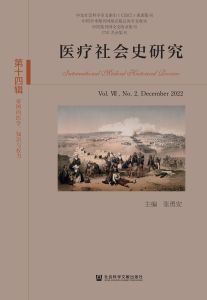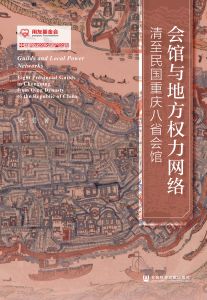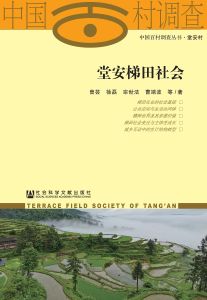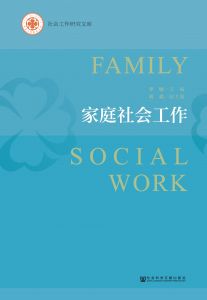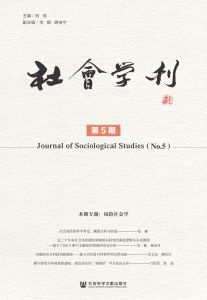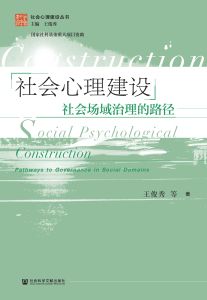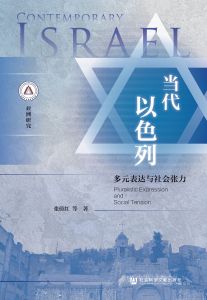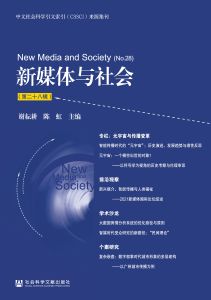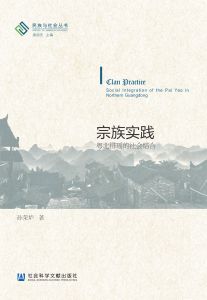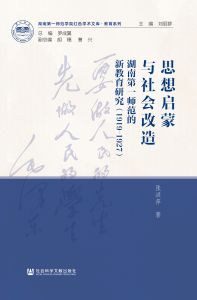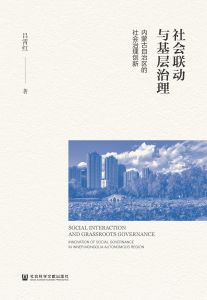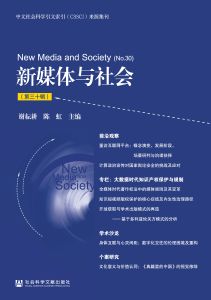首页 >
图书详情

图书简介
目录
参考文献
音频
视频
《权力与特权》主要回答了社会分层领域中的核心问题:谁得到了什么?为什么能够得到?通过用辩证的视角来审视这一学科思想的的发展。格尔哈特?伦斯基描述了正在兴起的理论综合的框架。他认为不同社会学家——如马克思、斯宾塞、萨姆纳、维布伦、莫斯卡、帕累托、索罗金、帕森斯和达伦多夫——所持的多元化、对立矛盾的观点都可以被包含于这一不断发展的、系统化的理论主体当中。
[展开]
-
第一章 谁得到了什么?为什么会得到?
-
公元前的早期观点
-
从保罗到温斯坦莱的基督教观点
-
从洛克到莫斯卡的近代早期观点
-
功能主义者和冲突派理论家
-
正在出现的综合
-
基本的争论点
-
-
第二章 人与社会
-
人性
-
社会的性质
-
社会利益和个人利益:它们的关系
-
个人利益:它们的性质
-
社会利益:它们的性质
-
-
第三章 分配制度的动力学
-
分配的两个规律
-
分配制度中的差异情况
-
强力及其转化
-
权利的统治
-
制度化权力的种类
-
政治周期
-
中间阶级和权力的制度化
-
反作用
-
政权的垮台
-
-
第四章 分配制度的结构
-
阶级
-
种姓、等级、地位群体和精英
-
阶级系统
-
公民权:一个具有潜在价值的资源
-
分配制度
-
对地位不一致的反应
-
回顾和展望
-
-
第五章 狩猎和采集社会
-
狩猎和采集社会的共同特征
-
狩猎和采集社会的差异特征
-
分配制度的共同特征
-
分配制度的差异特征及其产生原因
-
-
第六章 简单园耕社会
-
简单园耕社会的共同特征
-
分配制度的共同特征
-
分配制度的差异特征
-
关键性发展
-
-
第七章 先进园耕社会
-
先进园耕社会的共同特点
-
分配制度简介
-
造成在政治发展和不平等方面差异的原因
-
政体与不平等
-
统治者的权力
-
权力的其他基础
-
武力、意识形态与效用
-
权力和特权的世袭传递
-
立宪制度及其约束
-
-
第八章 农业社会(一)
-
农业社会:一个普遍类型?
-
农业社会的共同特征
-
国家、统治者和社会不平等
-
执政阶级
-
统治者对抗执政阶级:多种模式及其原因
-
-
第九章 农业社会(二)
-
侍从阶级
-
商人阶级
-
僧侣阶级
-
农民阶级
-
手工业者阶级
-
贱民和堕落者阶级
-
被遗弃者阶级
-
图解总结
-
地位群体
-
垂直流动
-
关于分配公正性的一个注脚
-
-
第十章 工业社会(一)
-
工业社会的共同特征
-
基本趋势的逆转
-
逆转的原因
-
政府的角色
-
统治阶级:事实还是神话
-
政治的阶级系统
-
财产的阶级系统
-
-
第十一章 工业社会(二)
-
业主阶级
-
党的官员阶级
-
管理者阶级
-
军人阶级
-
专业技术职业者阶级
-
职员阶级
-
销售者阶级
-
工人阶级
-
农业者阶级
-
失业者阶级和奴隶劳动者阶级
-
-
第十二章 工业社会(三)
-
教育的阶级系统
-
种族、民族和宗教的阶级系统
-
以性别为基础的阶级系统
-
以年龄为基础的阶级系统
-
阶级和地位一致性
-
垂直流动
-
阶级斗争
-
公民权和再分配过程的复兴
-
声望分层
-
未来的趋势
-
-
第十三章 回顾与展望
-
对一般理论的再考察
-
再看保守主义和激进主义
-
未来的议程
-
[1][1]Abramov,Fedor:The New Life:A Day on a Collective Farm ,translated by George Reavey(New York:Grove Press,1963).
[2][2]Amalrik,Andrei:Involuntary Journey to Siberia ,translated by Mariya Harari and Max Hayward(New York:Harcourt,Brace,Jovanovich,1970).
[3][3]Averitt,Robert:The Dual Economy:The Dynamics of American Industry Structure (New York:Horton,1968).
[4][4]Beck,E.M.,Patrick Horan,and Charles Tolbert:“Stratification in a Dual Economy:A Sectoral Model of Earnings Determination,” American Sociological Review ,43(1978),pp.704-720.
[5][5]Bibb,Robert,and William H.Form:“The Effects of Industrial,Occupational,and Sex Stratification on Wages in Blue-Collar Markets,” Social Forces ,55(1977),pp.974-996.
[6][6]Blau,Peter,and Otis Dudley Duncan:The American Occupational Structure (New York:Wiley,1967).
[7][7]Blumberg,Rae Lesser:Stratification:Socioeconomic and Sexual Inequality (Dubuque,Iowa:William C.Brown,1978).
[8][8]Boserup,Ester:Women’s Role in Economic Development (New York:St.Martin’s Press,1970).
[9][9]Chase-Dunn,Christopher:“The Effects of International Economic Dependence on Development and Inequality:A Cross-National Study,” American Sociological Review ,40(1975),pp.720-738.
[10][10]Cliff,Tony:State Capitalism in Russia (London:Pluto Press,1974).
[11][11]Connor,Walter:Socialism,Politics,and Equality:Hierarchy and Change in Eastern Europe and the USSR (New York:Columbia University Press,1979).
[12][12]Dudintsev,Vladimir:Not By Bread Alone (New York:Dutton,1957).
[13][13]Farmer,B.H.:“Agriculture:Comparative Technology,” International Encyclopedia of the Social Sciences ,vol.Ⅰ,pp.202-208.
[14][14]Friedan,Betty:The Feminine Mystique (New York:Norton,1963).
[15][15]Friedl,Ernestine:Women and Men:An Anthropologist’s View (New York:Holt,Rinehart,and Winston,1975).
[16][16]Huber,Joan,and Glenna Spitze:Sex Stratification:Children,Housework,and Jobs (New York:Academic Press,1983).
[17][17]Inkeles,Alex:“Social Stratification and Mobility in the Soviet Union:1940-1950,” American Sociological Review ,15(1950),pp.465-479.
[18][18]Inkeles,Alex,and Raymond Bauer:The Soviet Citizen (Cambridge,Mass.:Harvard University Press,1959).
[19][19]Jones,T.Anthony:“Models of Socialist Development,” International Journal of Comparative Sociology ,24(1983),pp.86-99.
[20][20]Lane,David:The End of Social Inequality?:Class,Status,and Power Under State Socialism (London:Allen & Unwin,1982).
[21][21]Lapidus,Gail:Women in Soviet Society:Equality,Development and Social Change (Berkeley:University of California Press,1978).
[22][22]Lenski,Gerhard:Human Societies (New York:McGraw-Hill,1970).
[23][23]Lenski,Gerhard:“Marxist Experiments in Destratification,” Social Forces ,57(1978),pp.364-383.
[24][24]Lenski,Gerhard:“Income Stratification in the United States:Toward a Revised Model of the System,” Research in Social Stratification and Mobility ,3(1984),forthcoming.
[25][25]Lenski,Gerhard,and Jean Lenski:Human Societies (New York:McGraw-Hill,1974,1978,1982).
[26][26]Lenski,Gerhard,and Patrick Nolan:“Trajectories of Development:A Test of Ecological-Evolutionary Theory,” Social Forces (1984,forthcoming).
[27][27]Mandel,William:Soviet Women (Garden City,N.Y.:Doubleday Anchor,1975).
[28][28]McNeill,William H.:Plagues and People (Garden City,N.Y:Doubleday,1976).
[29][29]Matthews,Mervyn:Class and Society in Soviet Russia (New York:Walker,1972).
[30][30]Matthews,Mervyn:Privilege in the Soviet Union:A Study of Elite Life-Styles Under Communism (London:Allen & Unwin,1978).
[31][31]Medvedev,Roy:Let History Judge:The Origins and Consequences of Stalinism ,translated by Colleen Taylor(New York:Knopf,1971).
[32][32]Meggers,Betty:“Environmental Limitations on the Development of Culture,” American Anthropologist ,56(1954),pp.801-824.
[33][33]Nolan,Patrick D.:“Status in the World Economy and National Structure and Development:An Examination of Developmentalist and Dependency Theories,” International Journal of Comparative Sociology ,24(1983),pp.109-120.
[34][34]Nowak,Stefan:“Changes of Social Structure in Social Consciousness,” Polish Sociological Bulletin ,10(1964),pp.34-53.
[35][35]O’Kelley,Charlotte:Women and Men in Society (New York:Van Nostrand,1980).
[36][36]Pohoski,Michal:“Interrelations Between the Social Mobility of Individuals and Groups in the Process of Economic Growth in Poland,” Polish Sociological Bulletin ,2(1964),pp.17-33.
[37][37]Pohoski,Michal:personal communication,1978.
[38][38]Rubinson,Richard:“The World Economy and the Distribution of Income Within States:A Cross-National Study,” American Sociological Review ,41(1976),pp.638-659.
[39][39]Sarapata,Adam:“Iustum Pretium,” Polish Sociological Bulletin ,7(1963),pp.41-56.
[40][40]Sarapata,Adam,and Wlodzimierz Wesolowski:“The Evaluations of Occupations by Warsaw Inhabitants,” American Journal of Sociology ,66(1961),pp.581-591.
[41][41]Sewell,William,Archibald Haller,and Alejandro Portes:“The Educational and Early Occupational Status Attainment Process,” American Sociological Review ,34(1969),pp.82-92.
[42][42]Sewell,William,Archibald Haller,and George Ohlendorf:“The Educational and Early Occupational Achievement Process:Replication and Revision,” American Sociological Review ,35(1970),pp.1014-1027.
[43][43]Smith,Hedrick:The Russians (New York:Quadrangle,1976).
[44][44]Solzhenitsyn,Alexander:One Day in the Life of Ivan Denisovich ,translated by Max Hayward and Ronald Hingley(New York:Bantam,1963).
[45][45]Swafford,Michael:“Sex Differences in Soviet Earnings,” American Sociological Review ,43(1978),pp.657-673.
[46][46]Sweezy,Paul,and Charles Bettelheim:On the Transition to Socialism (New York:Monthly Review Press,1971).
[47][47]Szczepanski,Jan:Polish Society (New York:Random House,1970).
[48][48]Treiman,Donald J.:Occupational Prestige in Comparative Perspective (New York:Academic Press,1977).
[49][49]Wallerstein,Immanuel:The Modern World-System ,vol.Ⅰ(New York:Academic Press,1974).
[50][50]Wallerstein,Immanuel:The Modern World System ,vol.Ⅱ(New York:Academic Press,1980).
[51][51]Watters,R.F.:“The Nature of Shifting Cultivation:A Review of Recent Research,” Pacific Viewpoints ,1(1960),pp.59-99.
[52][52]Wesolowski,Wlodzimierz:Classes,Strata and Power ,translated by George Kolankiewicz(London:Routledge & Kegan Paul,1979,original edition,1966).
[53][53]Wesolowski,Wlodzimierz:“Strata and Strata Interest in Socialist Society,” in Celia Heller(ed.),Structured Social Inequality (New York:Macmillan,1969),pp.465-477.
[54][54]Whyte,Martin K.:The Status of Women in Preindustrial Societies (Princeton,N.J.:Princeton University Press,1978).
[55][55]Abegglen,James:The Japanese Factory:Aspects of Its Social Organization (New York:Free Press,1958).
[56][56]Abegglen,James,and Hiroshi Mannari:“Japanese Business Leaders:1880-1960,” unpublished manuscript prepared for the Conference on State and Economic Enterprise in Modern Japan,Association for Asian Studies,1963.
[57][57]Adrian,Charles:Governing Urban America ,2d ed.(New York:McGraw-Hill,1961).
[58][58]Albright,William F.:From the Stone Age to Christianity ,2d ed.(Garden City,N.Y.:Doubleday Anchor,1957).
[59][59]Albright,William F.:The Archaeology of Palestine (London:Penguin,1956).
[60][60]Alderson,A.D.:The Structure of the Ottoman Dynasty (Oxford:Clarendon Press,1956).
[61][61]Alford,Robert:Party and Society:The Anglo-American Democracies (Chicago:Rand McNally,1963).
[62][62]Allen,W.E.D.:The History of the Georgian People (London:Routledge,1932).
[63][63]Anderson,C.Arnold:“Lifetime Inter-occupation Mobility Patterns in Sweden,” Acta Sociologica ,1(1960),pp.168-202.
[64][64]Anderson,Elin:We Americans:A Study of Cleavage in an American City (Cambridge,Mass.:Harvard University Press,1938).
[65][65]Andrén,Nils:Modern Swedish Government (Stockholm:Almqvist & Wiksell,1961).
[66][66]Andrewes,A.:The Greek Tyrants (New York:Harper Torchbooks,1963).
[67][67]Andrzejewski,Stanislaw:Military Organization and Society (London:Routledge,1954).
[68][68]Angell,Robert C.:“Preferences for Moral Norms in Three Problem Areas,” American Journal of Sociology ,67(1962),pp.650-660.
[69][69]Aristotle:Politics ,translated by Benjamin Jowett(New York:Modern Library,1943).
[70][70]Armstrong,C.A.J.:“France of the Hundred Years War and the Renaissance,” in J.M.Wallace-Hadrill and John McManners(eds.),France:Government and Society (London:Methuen,1957),pp.83-104.
[71][71]Aydelotte,Frank:Elizabethan Rogues and Vagabonds (Oxford:Clarendon Press,1913).
[72][72]Aylmer,G.E.:The King’s Servants:The Civil Service of Charles Ⅰ (London:Routledge,1961).
[73][73]Baegert,Jacob,S.J.:Account of the Aboriginal Inhabitants of the California Peninsula ,translated and arranged by Charles Rau,Smithsonian Institution:Annual Reports for 1863 and 1864 ,reprinted in Carleton S.Coon(ed.),A Reader in General Anthropology (New York:Holt,1948),pp.61-83.
[74][74]Bailey,F.G.:Tribe,Caste,and Nation (Manchester:Manchester University Press,1960).
[75][75]Banfield,Edward:The Moral Basis of a Backward Society (New York:Free Press,1958).
[76][76]Banfield,Edward:Big City Politics (New York:Random House,1965).
[77][77]Banfield,Edward and James Wilson:City Politics (Cambridge,Mass.:Harvard University and M.I.T.Presses,1963).
[78][78]Barber,Bernard:Social Stratification:A Comparative Analysis of Structure and Process (New York:Harcourt,Brace & World,1957).
[79][79]Barber,Elinor:The Bourgeoisie in 18th Century France (Princeton,N.J.:Princeton University Press,1955).
[80][80]Bauer,Raymond,Alex Inkeles,and Clyde Kluckhohn:How the Soviet System Works (Cambridge,Mass.:Harvard University Press,1956).
[81][81]Bauer,Raymond,Ithiel de Sola Pool,and Lewis Dexter:American Business and Public Policy:The Politics of Foreign Trade (New York:Atherton,1963).
[82][82]Baxter,P.T.W.,and Audrey Butt:The Azande and Related Peoples (London:International African Institute,1953).
[83][83]Beer,Samuel H.:“Great Britain:From Governing Elite to Mass Parties,” in Sigmund Neumann(ed.),Modern Political Parties:Approaches to Comparative Politics (Chicago:University of Chicago Press,1956),pp.9-57.
[84][84]Bellah,Robert:Tokugawa Religion:The Values of Pre-industrial Japan (New York:Free Press,1957).
[85][85]Bendix,Reinhard,and S.M.Lipset(eds.):Class,Status,and Power:A Reader in Social Stratification (New York:Free Press,1953).
[86][86]Bennett,H.S.:Life on the English Manor:A Study of Peasant Conditions,1150-1400 (London:Cambridge University Press,1960).
[87][87]Bergel,Egon:Social Stratification (New York:McGraw-Hill,1962).
[88][88]Berger,Peter:Invitation to Sociology (Garden City,N.Y.:Doubleday Anchor,1963).
[89][89]Berle,Adolf A.,and Gardiner C.Means:The Modern Corporation and Private Property (New York:Macmillan,1932).
[90][90]Bierstedt,Robert:“An Analysis of Social Power,” American Sociological Review ,15(1950),pp.730-738.
[91][91]Bill,Valentine:The Forgotten Class:The Russian Bourgeoisie from the Earliest Beginnings to 1900 (New York:Frederick A.Praeger,1959).
[92][92]Blau,Peter:Exchange and Power in Society (New York:Wiley,1964).
[93][93]Bloch,Marc:Feudal Society ,translated by L.A.Manyon(Chicago:University of Chicago Press,1962).
[94][94]Blum,Jerome:Lord and Peasant in Russia from the Ninth to the Nineteenth Century (Princeton,N.J.:Princeton University Press,1961).
[95][95]Boak,A.E.R.:A History of Rome to 565 A.D. ,3d ed.(New York:Macmillan,1943).
[96][96]Bolte,Karl Martin:Sozialer Aufstieg und Abstieg (Stuttgart:Enke,1959).
[97][97]Bose,Ashish:“The First Census of Free India,” Modern Review ,95(1954),pp.111-119.
[98][98]Bowen,John C.:Some Aspects of Transfer Taxation in the United States (unpublished doctoral dissertation,University of Michigan,1958).
[99][99]Braginskii,B.I.,and D.Dumov:“Labor Productivity in Agriculture in the USSR and the USA,” in Harry G.Shaffer(ed.),The Soviet Economy:A Collection of Western and Soviet Views (New York:Appleton-Century-Crofts,1963),pp.176-184.
[100][100]Braidwood,Robert:“The Agricultural Revolution,” Scientific American ,203(1960),pp.130-148.
[101][101]Bram,Joseph:An Analysis of Incan Militarism ,Monographs of the American Ethnological Society,4(1941).
[102][102]Bridges,Rev.Thomas:“The Canoe Indians of Tierra del Feugo,” in Carleton S.Coon(ed.),A Reader in General Anthropology (New York:Holt,1948),pp.84-116.
[103][103]Brown,Emily Clark:“The Soviet Labor Market,” in Morris Bornstein and Daniel Fusfeld(eds.),The Soviet Economy (Homewood,Ill.:Irwin,1962),pp.195-220.
[104][104]Brown,Harrison:The Challenge of Man’s Future (New York:Viking Compass Books,1956).
[105][105]Bry,Gerhard:Wages in Germany,1871-1945 (Princeton,N.J.:Princeton University Press,1960).
[106][106]Buchanan,K.M. and J.C.Pugh:Land and People in Nigeria (London:University of London Press,1955).
[107][107]Buck,John Lossing:Secretariat Paper No.1:Tenth Conference of the Institute of Pacific Relations ,Stratford on Avon,1947,reprinted in Irwin T.Sanders et al.(eds.),Societies around the World (New York:Dryden Press,1953).
[108][108]Burg,David:“Observations of Soviet University Students,” in Richard Pipes(ed.),The Russian Intelligentsia (New York:Columbia University Press,1961).
[109][109]Burnham,James:The Managerial Revolution (Bloomington,Ind.:Indiana University Press,1960).
[110][110]Butler,D.E.,and Richard Rose:The British General Election of 1959 (London:Macmillan,1960).
[111][111]Cambridge Ancient History (London:Cambridge University Press,1939),especially vol.12.
[112][112]Cambridge History of India (London:Cambridge University Press,1937),especially volume 4,The Mughal Period.
[113][113]Campbell,Angus,Philip Converse,Warren Miller,and Donald Stokes:The American Voter (New York:Wiley,1960).
[114][114]Carcopino,Jerome:Daily Life in Ancient Rome:The People and the City at the Height of Empire ,translated by E.O.Lorimer(London:Routledge,1941).
[115][115]Carlsson,Gosta:Social Mobility and Class Structure (Lund:Gleerup,1958).
[116][116]Caron,Pierre:“The Army,” in Arthur Tilley(ed.),Medieval France (London:Cambridge University Press),pp.154-165.
[117][117]Carr,Raymond:“Spain,” in A.Goodwin(ed.),The European Nobility in the Eighteenth Century (London:Black,1953),pp.43-58.
[118][118]Carr-Saunders,A.M.:World Population (Oxford:Clarendon Press,1936).
[119][119]Carr-Saunders,A.M. and P.A.Wilson:The Professions (Oxford:Clarendon Press,1933).
[120][120]Carstairs,G.M.:“A Village in Rajasthan,” in M.N.Srinivas(ed.),India’s Villages (Calcutta:West Bengal Government Press,1955),pp.33-38.
[121][121]Carter,Gwendolen:“The Commonwealth Overseas:Variation on a British Theme,” in Sigmund Neumann(ed.),Modern Political Parties:Approaches to Comparative Politics (Chicago:University of Chicago Press,1956),pp.58-107.
[122][122]Cartter,Allan M.:The Redistribution of Income in Postwar Britain (New Haven,Conn.:Yale University Press,1955).
[123][123]Chang,Chung-li:The Chinese Gentry:Studies in Their Role in Nineteenth-Century Chinese Society (Seattle,Wash.:University of Washington Press,1955).
[124][124]Chang,Chung-li:The Income of the Chinese Gentry (Seattle,Wash.:University of Washington Press,1962).
[125][125]Chapman,R.M.,W.K.Jackson,and A.V.Mitchell:New Zealand Politics in Action (London:Oxford University Press,1962).
[126][126]Chi,Tsui:A Short History of Chinese Civilization (New York:Putnam,1943).
[127][127]Childe,V.Gordon:Man Makes Himself (London:Watts,1936).
[128][128]Childe,V.Gordon:New Light on the Most Ancient East ,rev.ed.(London:Routledge,1952).
[129][129]Childe,V.Gordon:Social Evolution (London:Watts,1951).
[130][130]Childe,V.Gordon:“The New Stone Age,” in Harry Shapiro(ed.),Man,Culture,and Society (Fair Lawn,N.J.:Oxford Galaxy,1960),pp.94-110.
[131][131]Childs,Marquis:Sweden:The Middle Way ,rev.ed.(New Haven,Conn.:Yale University Press,1947).
[132][132]Chorley,Katharine:Armies and the Art of Revolution (London:Faber,1943).
[133][133]Clark,Burton:Educating the Expert Society (San Francisco,Calif.:Chandler,1962).
[134][134]Clough,S.B.:The Economic Development of Western Civilization (New York:McGraw-Hill,1959).
[135][135]Clough,S.B. and C.W.Cole:Economic History of Europe (Boston:Heath,1941).
[136][136]Cole,G.D.H.:The Post-war Condition of Britain (London:Routledge,1956).
[137][137]Cole,G.D.H. and R.W.Postgate:The British Common People,1746-1938 (New York:Knopf,1939).
[138][138]Colson,Elizabeth:“The Plateau Tonga of Northern Rhodesia,” in Elizabeth Colson and Max Gluckman(eds.),Seven Tribes of British Central Africa (Manchester:Manchester University Press,1951),pp.94-163.
[139][139]Colson,Elizabeth and Max Gluckman(eds.):Seven Tribes of British Central Africa (Manchester:Manchester University Press,1951).
[140][140]Converse,Philip:“Religion and Politics:The 1960 Elections,” unpublished paper of the Survey Research Center of the University of Michigan,1961.
[141][141]Cooley,Charles Horton:Social Organization (New York:Scribner,1909).
[142][142]Coser,Lewis:The Functions of Social Conflict (New York:Free Press,1956).
[143][143]Coulton,G.G.:Medieval Panorama (New York:Meridian Books,1955).
[144][144]Cowell,F.R.:Cicero and the Roman Republic (London:Penguin,1956).
[145][145]Crisp,L.F.:The Australian Federal Labour Party,1901-1951 (London:Longmans,1955).
[146][146]Crowder,Michael:The Story of Nigeria (London:Faber,1962).
[147][147]Current Population Reports: “Lifetime Occupational Mobility of Adult Males,March,1962,” U.S.Bureau of the Census(1964),Series P-23,No.11.
[148][148]Current Population Reports: “Religion Reported by the Civilian Population of the United States:March,1957,” U.S.Bureau of the Census(1958),Series P-20,No.79.
[149][149]Dahl,Robert:Who Governs?:Democracy and Power in an American City (New Haven,Conn.:Yale University Press,1961).
[150][150]Dahl,Robert and Charles Lindblom:Politics,Economics,and Welfare (New York:Harper & Row,1953).
[151][151]Dahrendorf,Ralf:Class and Class Conflict in Industrial Society (Stanford,Calif.:Stanford University Press,1959).
[152][152]Dallin,David J.:The New Soviet Empire (New Haven,Conn.:Yale University Press,1951).
[153][153]Daugherty,Carroll:Labor Problems in American Industry ,5th ed.(Boston:Houghton Mifflin,1941).
[154][154]Davis,Kingsley:Human Society (New York:Macmillan,1949).
[155][155]Davis,Kingsley:“The Origin and Growth of Urbanization in the World,” American Journal of Sociology ,60(1955),pp.429-437.
[156][156]Davis,Kingsley and Wilbert Moore:“Some Principles of Stratification,” American Sociological Review ,10(.1945),pp.242-249.
[157][157]Dawidowicz,Lucy,and Leon Goldstein:Politics in a Pluralist Democracy:Studies of Voting in the 1960 Election (New York:Institute of Human Relations Press,1963).
[158][158]de Jouvenal,Bertrand:On Power:Its Nature and the History of Its Growth ,translated by J.F.Huntington(New York:Viking,1949).
[159][159]Demographic Yearbook ,1953(New York:United Nations,1953).
[160][160]Denig,Edwin Thompson:Five Indian Tribes of the Upper Missouri (Norman,Okla.:University of Oklahoma Press,1961).
[161][161]Dewar,Margaret:“Labour and Wage Reforms in the USSR,” in Harry B.Shaffer(ed.),The Soviet Economy:A Collection of Western and Soviet Views (New York:Appleton-Century-Crofts,1963),pp 216-225.
[162][162]Dewhurst,J.Frederic,and Associates:America’s Needs and Resources (New York:Twentieth Century Fund,1955).
[163][163]Dewhurst,J.Frederic,and Associates:Europe’s Needs and Resources (New York:Twentieth Century Fund,1961).
[164][164]DeWitt,Nicholas:Education and Professional Employment in the USSR (Washington,D.C.:National Science Foundation,1961).
[165][165]de Young,John E.:Village Life in Modern Thailand (Berkeley,Calif.:University of California Press,1958).
[166][166]Dicey,A.V.:The Law of the Constitution (London:Macmillan,1885).
[167][167]Dictionary of Occupational Titles ,2d ed.(Washington:GPO,1949).
[168][168]Dixon,Roland:“The Northern Maidu,” in Carleton S.Coon(ed.),A Reader in General Anthropology (New York:Holt,1948),pp.263-292.
[169][169]Djilas,Milovan:The New Class:An Analysis of the Communist System (New York:Frederick A.Praeger,1959).
[170][170]Douglas,Robert K.:Society in China (London:Innes,1894).
[171][171]Downey,Glanville:Constantinople:In the Age of Justinian (Norman,Okla.:University of Oklahoma Press,1960).
[172][172]Drake,St.Clair,and Horace Cayton:Black Metropolis:A Study of Negro Life in a Northern City (New York:Harcourt,Brace & World,1945).
[173][173]Drucker,Philip:Indians of the Northwest Coast (New York:McGraw-Hill,1955).
[174][174]Dudintsev,Vladimir:Not by Bread Alone (New York:Dutton,1957).
[175][175]Duncan,O.D.:“A Socioeconomic Index for All Occupations,” in Albert J.Reiss,Occupations and Social Status (New York:Free Press,1961),pp.109-138.
[176][176]Duncan,O.D.:“Social Organization and the Ecosystem,” in Robert E.Faris(ed.),Handbook of Modern Sociology (Chicago:Rand McNally,1964),pp.36-82.
[177][177]Duverger,Maurice:Political Parties:Their Organization and Activity in the Modern State ,translated by Barbara North and Robert North(London:Methuen,1959).
[178][178]Eberhard,Wolfram:A History of China ,2d ed.(Berkeley,Calif.:University of California Press,1960).
[179][179]Eberhard,Wolfram:Conquerors and Rulers:Social Forces in Medieval China (Leiden,Netherlands:Brill,1952).
[180][180]Eberhard,Wolfram:Social Mobility in Traditional China (Leiden,Netherlands:Brill,1962).
[181][181]Eckland,Bruce:“Academic Ability,Higher Education,and Occupational Mobility,” American Sociological Review ,30(1965),pp.735-746.
[182][182]Eggan,Fred:Social Organization of the Western Pueblos (Chicago:University of Chicago Press,1950).
[183][183]Ehrmann,Henry W.:Organized Business in France (Princeton,N.J.:Princeton University Press,1957).
[184][184]Eisenstadt,S.N.:“Religious Organizations and Political Process in Centralized Empires,” The Journal of Asian Studies ,21(1962),pp.271-294.
[185][185]Eisenstadt,S.N.:The Political Systems of Empires:The Rise and Fall of the Historical Bureaucratic Societies (New York:Free Press,1963).
[186][186]Erman,Adolf:Life in Ancient Egypt ,translated by H.M.Tirard(London:Macmillan,1894).
[187][187]Evans,Joan:Life in Medieval France (London:Oxford University Press,1925).
[188][188]Ewers,John C.:“The Horse in Blackfoot Indian Culture,with Comparative Material from Other Western Tribes,” Smithsonian Institution,Bureau of American Ethnology,Bulletin 159(1955).
[189][189]Fainsod,Merle:How Russia Is Ruled ,rev.ed.(Cambridge,Mass.:Harvard University Press,1963).
[190][190]Fallers,Margaret Chave:The Eastern Lacustrine Bantu (London:International African Institute,1960).
[191][191]Fei,Hsiao-Tung:China’s Gentry (Chicago:University of Chicago Press,1953).
[192][192]Fei,Hsiao-Tung:“Peasantry and Gentry:An Interpretation of Chinese Social Structure and Its Changes,” American Journal of Sociology ,52(1946),pp.1-17.
[193][193]Feuer,Lewis(ed.):Karl Marx and Friedrich Engels:Basic Writings on Politics and Philosophy (Garden City,N.Y.:Doubleday Anchor,1959).
[194][194]Fleisher,Wilfrid:Sweden:The Welfare State (New York:John Day,1956).
[195][195]Florence,P.Sargant:Ownership,Control,and Success of Large Companies:An Analysis of English Industrial Structure and Policy,1936-1951 (London:Street & Maxwell,1961).
[196][196]Forde,C.Daryll:Habitat,Economy and Society (London:Methuen,1934).
[197][197]Forde,C.Daryll:“Primitive Economics,” in Harry Shapiro(ed).,Man,Culture,and Society (Fair Lawn,N.J.:Oxford Galaxy,1960),pp.330-344.
[198][198]Fortes,Meyer and E.E.Evans-Pritchard(eds.):African Political Systems (London:Oxford University Press,1940).
[199][199]Fourastié,Jean:The Causes of Wealth ,translated by Theodore Caplow(New York:Free Press,1960,first published 1951).
[200][200]Fried,Morton:The Fabric of Chinese Society:A Study of the Social Life of a Chinese County Seat (New York:Frederick A.Praeger,1953).
[201][201]Friedan,Betty:The Feminine Mystique (New York:Norton,1963).
[202][202]Friedman,Milton,and Simon Kuznets:Income from Independent Professional Practice (New York:National Bureau of Economic Research,1945).
[203][203]Galbraith,Kenneth:American Capitalism:The Concept of Countervailing Power (Boston:Houghton Mifflin,1952).
[204][204]Galbraith,Kenneth:The Affluent Society (Boston:Houghton Mifflin,1958).
[205][205]Galenson,Walter:Labor in Norway (Cambridge,Mass.:Harvard University Press,1949).
[206][206]Gamble,Sidney D.:Peking:A Social Survey (Garden City,N.Y.:Doubleday,1921).
[207][207]Ganshof,Francois:“Medieval Agrarian Society in Its Prime:France,the Low Countries,and Western Germany,” in The Cambridge Economic History ,vol.Ⅰ,pp.278-322.
[208][208]Gibb,H.A.R.:Mohammedanism:An Historical Survey (New York:Mentor Books,1955).
[209][209]Gibbs,James L.(ed.):Peoples of Africa (New York:Holt,1965).
[210][210]Gleason,S.E.:An Ecclesiastical Barony in the Middle Ages:The Bishopric of Bayeux,1066-1204 (Cambridge,Mass.:Harvard University Press,1936).
[211][211]Gluckman,Max:“The Lozi of Barotseland in Northwestern Rhodesia,” in Elizabeth Colson and Max Gluckman(eds.),Seven Tribes of British Central Africa (Manchester:Manchester University Press,1951),pp.1-93.
[212][212]Goffman,Irving:“Status Consistency and Preference for Change in Power Distribution,” American Sociological Review ,22(1957),pp.275-281.
[213][213]Goldhamer,Herbert,and Edward Shils:“Types of Power and Status,” American Journal of Sociology ,45(1939),pp.171-182
[214][214]Goldman,Irving:“The Zuni Indians of New Mexico,” in Margaret Mead(ed.),Cooperation and Competition among Primitive Peoples ,rev.ed.(Boston:Beacon Press,1961),pp.313-353.
[215][215]Goldschmidt,Walter:Man’s Way:A Preface to the Understanding of Human Society (New York:Holt,1959).
[216][216]Goode,William J.:World Revolution and Family Patterns (New York:Free Press,1963).
[217][217]Goodwin,A.:“Prussia,” in A.Goodwin(ed.),The European Nobility in the Eighteenth Century (London:Black,1953),pp.83-101.
[218][218]Gordon,Margaret:Retraining and Labor Market Adjustment in Western Europe (Washington:GPO,1965).
[219][219]Gordon,Milton:Assimilation in American Life:The Role of Race,Religion,and National Origins (Fair Lawn,N.J.:Oxford University Press,1964).
[220][220]Gordon,Robert A.:Business Leadership in the Large Corporation (Berkeley,Calif.:University of California Press,1961,originally published by the Brookings Institution,1954).
[221][221]Gottschalk,Louis:The Era of the French Revolution (Boston:Houghton Mifflin,1929).
[222][222]Gouldner,Alvin,and R.A.Petersen:Notes on Technology and the Moral Order (Indianapolis,Ind.:Bobbs-Merrill,1962).
[223][223]Granick,David:The European Executive (Garden City,N.Y.:Doubleday Anchor,1964).
[224][224]Granick,David:The Red Executive (Garden City,N.Y.:Doubleday Anchor,1961).
[225][225]Gray,H.L.:“Incomes from Land in England in 1436,” English Historical Review ,49(1934),pp.607-639.
[226][226]Grove,J.W.:Government and Industry in Britain (London:Longmans,1962).
[227][227]Grzybowski,Kazimierz:Soviet Legal Institution:Doctrines and Social Functions (Ann Arbor,Mich.:University of Michigan Press,1962).
[228][228]Habakkuk,H.J.:“England,” in A.Goodwin(ed.),The European Nobility in the Eighteenth Century (London:Black,1953),pp.1-21.
[229][229]Halphen,L.:“Industry and Commerce,” in Arthur Tilley(ed.),Medieval France (London:Cambridge University Press,1922),pp.179-211.
[230][230]Hatcher,Mattie Austin:“Descriptions of the Tejas or Asinai Indians:1691-1722,” Southwestern Historical Quarterly ,30(1927),pp.283-304.
[231][231]Heard,Alexander:The Costs of Democracy:Financing American Political Campaigns (Garden City,N.Y.:Doubleday Anchor,1962).
[232][232]Heckscher,Eli F.:An Economic History of Sweden ,translated by Goram Ohlin(Cambridge,Mass.:Harvard University Press,1954).
[233][233]Heckscher,Gunnar:“Interest Groups in Sweden:Their Political Role,” in Henry W.Ehrmann(ed.),Interest Groups on Four Continents (Pittsburgh,Pa.:University of Pittsburgh Press,1958),pp.154-172.
[234][234]Heilbroner,Robert:The Making of Economic Society (Englewood Cliffs,N.J.:Prentice-Hall,1962).
[235][235]Herberg,Will:Protestant-Catholic-Jew (Garden City,N.Y.:Doubleday,1956).
[236][236]Herskovits,Melville:Dahomey:An Ancient West African Kingdom (Locust Valley,N.Y.:Augustin,1938).
[237][237]Hewes,Gordon:“The Rubric ‘Fishing and Fisheries,’” American Anthropologist ,50(1948),pp.238-246.
[238][238]Higbee,Edward:Farms and Farmers in an Urban Age (New York:Twentieth Century Fund,1963).
[239][239]Historical Statistics of the United States:Colonial Times to 1957 (Washington:GPO,1960).
[240][240]Hitti,Philip K.:History of the Arabs (London:Macmillan,1960).
[241][241]Hobbes,Thomas,Leviathan (New York:Liberal Arts,1958).
[242][242]Hobhouse,L.T.,G.C.Wheeler,and M.Ginsberg:The Material Culture and Social Institutions of the Simpler Peoples (London:Chapman & Hall,1930).
[243][243]Hobsbawn,E.J.:Primitive Rebels ,2d ed.(New York:Frederick A.Praeger,1963).
[244][244]Hochbaum,Godfrey et al.:“Socioeconomic Variables in a Large City,” American Journal of Sociology ,61(1955),pp.31-38.
[245][245]Hodgkin,Thomas:Nigerian Perspectives:An Historical Anthology (London:Oxford University Press,1960).
[246][246]Hogbin,H.Ian:Transformation Scene:The Changing Culture of a New Guinea Village (London:Routledge,1951).
[247][247]Hollingshead A.B.:Elmtown’s Youth (New York:Wiley,1949).
[248][248]Hollingshead A.B. and Frederick Redlich:Social Class and Mental Illness:A Community Study (New York:Wiley,1958).
[249][249]Holmberg,Allan:Nomads of the Long Bow:The Siriono of Eastern Bolivia ,Smithsonian Institution,Institute of Social Anthropology,Publication No.10(1950).
[250][250]Holzman,F.D.:“Financing Soviet Economic Development,” in Morris Bernstein and Daniel Fusfeld(eds.),The Soviet Economy (Homewood,Ill.:Irwin,1962),pp.145-160.
[251][251]Homans,George C. English Villagers of the Thirteenth Century (Cambridge,Mass.:Harvard University Press,1942).
[252][252]Homans,George C:“Status among Clerical Workers,” Human Organization ,12(1953),pp.5-10.
[253][253]Homans,George C:Social Behavior (New York:Harcourt,Brace & World,1961).
[254][254]Homo,Léon:Roman Political Institutions (London:Routledge,1929).
[255][255]Honigmann,John:The World of Man (New York:Harper & Row,1959).
[256][256]Hook,Sidney:The Hero in History:A Study in Limitation and Possibility (Boston:Beacon Press,1955,original edition 1943).
[257][257]Horowitz,Daniel:The Italian Labor Movement (Cambridge,Mass.:Harvard University Press,1963).
[258][258]Hoskins,W.G.:The Midland Peasant:The Economic and Social History of a Leicestershire Village (London:Macmillan,1957).
[259][259]Howitt,A.W.:Native Tribes of South-east Australia (London:Macmillan,1904).
[260][260]Hughes,A.J.B.,and J.van Velsen:The Ndebele (London:International African Institute,1954).
[261][261]Hughes,Philip:A Popular History of the Catholic Church (New York:Macmillan,1950).
[262][262]Hunter,Floyd:Community Power Structure (Chapel Hill,N.C.:University of North Carolina Press,1953).
[263][263]Inkeles,Alex:“Social Stratification and Mobility in the Soviet Union:1940-1950,” American Sociological Review ,15(1950),pp.465-479.
[264][264]Inkeles,Alex and Raymond Bauer:The Soviet Citizen (Cambridge,Mass.:Harvard University Press,1959).
[265][265]Inkeles,Alex and Kent Geiger(eds.):Soviet Society:A Book of Readings (Boston:Houghton Mifflin,1961).
[266][266]Inkeles,Alex and Peter Rossi:“National Comparisons of Occupational Prestige,” American Journal of Sociology ,61(1956),pp.329-339.
[267][267]Jackson,Elton:“Status Consistency and Symptoms of Stress,” American Sociological Review ,27(1962),pp.469-480.
[268][268]Jackson,Elton and Peter Burke:“Status and Symptoms of Stress:Additive and Interaction Effects,” American Sociological Review ,30(1965),pp.556-564.
[269][269]Jackson,Elton and Harry Crockett:“Occupational Mobility in the United States:A Point Estimate and Trend Comparison,” American Sociological Review ,29(1964),pp.5-15.
[270][270]Jaffe,A.J.,and R.O.Carleton:Occupational Mobility in the United States 1930-1960 (New York:King’s Crown,1954).
[271][271]Janowitz,Morris:“Social Stratification and Mobility in West Germany,” American Journal of Sociology ,64(1958),pp.6-24.
[272][272]Janowitz,Morris:The Professional Soldier (New York:Free Press,1960).
[273][273]Jasny,Naum:The Socialized Agriculture of the USSR (Stanford,Calif.:Stanford University Press,1949).
[274][274]John of Salisbury:The Statesman’s Book ,translated by John Dickinson(New York:Knopf,1927).
[275][275]Johnson,John J.:The Military and Society in Latin America (Stanford,Calif.:Stanford University Press,1964).
[276][276]Jolliffe,J.E.A.:The Constitutional History of Medieval England (London:Black,1937).
[277][277]Jones,A.H.M.:Studies in Roman Government and Law (Oxford:Blackwell,1960).
[278][278]Jusserand,J.J.:English Wayfaring Life in the Middle Ages ,3d ed.,translated by L.T.Smith(London:Benn,1925).
[279][279]Karin,A.K.N.:Changing Society in India and Pakistan (Dacca:Oxford University Press,1956).
[280][280]Keen,Maurice:The Outlaws of Medieval Legend (Routledge,1961).
[281][281]Keller,Suzanne:Beyond the Ruling Class:Strategic Elites in Modern Society (New York:Random House,1963).
[282][282]Key,V.O.,Jr.:Politics,Parties,and Pressure Groups ,3d ed.(New York:Crowell,1952).
[283][283]Kolko,Gabriel:Wealth and Power in America:An Analysis of Social Class and Income Distribution (New York:Frederick A Praeger,1962).
[284][284]Kosambi,D.D.:An Introduction to the History of India (Bombay:Popular Book Depot,1956).
[285][285]Kroeber,A.L.:Handbook of American Indians of California ,Smithsonian Institution,Bureau of American Ethnology,Bulletin 78(1925).
[286][286]Kroeber,A.L.:“Native Culture of the Southwest,” University of California Publications,American Archaeology and Ethnology ,23(1928),pp.375-398.
[287][287]Kroeber,A.L.:“The Chibcha,” in Julian Steward(ed.),Handbook of South American Indians ,Smithsonian Institution,Bureau of American Ethnology,Bulletin 143(1946),vol.Ⅱ,pp.887-909.
[288][288]Kumar,D.:“Caste and Landlessness in South India,” Comparative Studies in Society and History ,4(1962),pp.337-363.
[289][289]Kuper,Hilda:The Swazi (London:International African Institute,1952).
[290][290]Ladinsky,Jack:“Careers of Lawyers,Law Practice,and Legal Institutions,” American Sociological Review ,28(1963),pp.47-54.
[291][291]Lampman,Robert:The Share of Top Wealth-holders in National Wealth:1922-1956 (Princeton,N.J.:Princeton University Press,1962).
[292][292]Landecker,Werner S.:“Class Crystallization and Class Consciousness,” American Sociological Review ,28(1963),pp.219-229.
[293][293]Landtman,Gunnar:The Kiwai Papuans of British New Guinea (London:Macmillan,1927).
[294][294]Landtman,Gunnar:The Origin of the Inequality of the Social Classes (London:Routledge,1938).
[295][295]Lang,David M.:The Last Years of the Georgian Monarchy,1658-1832 (New York:Columbia University Press,1957).
[296][296]Langley,Kathleen M.:“The Distribution of Capital in Private Hands in 1936-38 and 1946-47(part 2),” Bulletin of the Oxford University Institute of Statistics (February,1951).
[297][297]Langlois,Charles V.:“History,” in Arthur Tilley(ed.),Medieval France (London:Cambridge University Press,1922),pp.30-153.
[298][298]Laski,Harold:The State in Theory and Practice (New York:Viking,1935).
[299][299]Lasswell,Harold:Politics:Who Gets What,When,How (New York:McGraw-Hill,1936).
[300][300]Lasswell,Harold and Abraham Kaplan:Power and Society:A Framework for Political Inquiry (New Haven,Conn.:Yale University Press,1950).
[301][301]Latourette,Kenneth S.:A History of Christianity (New York:Harper & Row,1953).
[302][302]Lauwerys,J.A.:Scandinavian Democracy (Copenhagen:Danish Institute et al.,1958).
[303][303]Laws of Manu ,translated by G.Bühler,in Max Müller(ed.),Sacred Books of the East (Oxford:Clarendon Press,1886),vol.25.
[304][304]Leiserson,Mark:Wages and Economic Control in Norway,1945-1957 (Cambridge,Mass.:Harvard University Press,1959).
[305][305]Lemberg,K.,and N.Ussing:“Redistribution of Income in Denmark,” in Alan Peacock(ed.),Income Redistribution and Social Policy (London:Cape,1954),pp.55-89.
[306][306]Lenski,Gerhard:“Comment,” Public Opinion Quarterly,28 (1964),pp.326-330.
[307][307]Lenski,Gerhard:“Religious Pluralism in Theoretical Perspective,” in Internationales Jahrbuch für Religionssoziologie (Köln:Westdeutscher Verlag,1965),vol.Ⅰ,pp.25-42.
[308][308]Lenski,Gerhard:“Social Participation and Status Crystallization,” American Sociological Review ,21(1956),pp.458-464.
[309][309]Lenski,Gerhard:“Status Crystallization:A Non-vertical Dimension of Social Status,” American Sociological Review ,19(1954),pp.405-413.
[310][310]Lenski,Gerhard:The Religious Factor (Garden City,N.Y.:Doubleday,1961).
[311][311]Lenski,Gerhard:“Trends in Inter-generational Mobility in the United States,” American Sociological Review ,23(1958),pp.514-523.
[312][312]Leonhard,Wolfgang:The Kremlin since Stalin ,translated by Elizabeth Wiskemann and Marian Jackson(New York:Frederick A.Praeger,1962).
[313][313]Lewis,Oscar:The Effects of White Contact upon Blackfoot Culture ,Monographs of the American Ethnological Society,6(1942).
[314][314]Lewis,Roy,and Angus Maude:Professional People (London:Phoenix House,1952).
[315][315]Lewis,Roy,and Rosemary Stewart:The Managers:A New Examination of the English,German and American Executive (New York:Mentor Books,1961).
[316][316]Leyburn,James G.:Frontier Folkways (New Haven,Conn.:Yale University Press,1936).
[317][317]Lindsay,Philip,and Reg Groves:The Peasants’Revolt,1381 (London:Hutchinson,n.d.).
[318][318]Link,Edith M.:The Emancipation of the Austrian Peasant,1740-1798 (New York:Columbia University Press,1949).
[319][319]Linton,Ralph:The Tanala:A Hill Tribe of Madagascar (Chicago:Field Museum of Natural History,1933).
[320][320]Linton,Ralph:The Tree of Culture (New York:Vintage Books,1959).
[321][321]Lipset,S.M.:Agrarian Socialism (Berkeley,Calif.:University of California Press,1950).
[322][322]Lipset,S.M. and Reinhard Bendix:Social Mobility in Industrial Society (Berkeley,Calif.:University of California Press,1959).
[323][323]Lockwood,David:The Blackcoated Worker:A Study in Class Consciousness (London:G.Allen,1958).
[324][324]Lopreato,Joseph:“Social Mobility in Italy,” American Journal of Sociology ,71(1965),pp.311-314.
[325][325]Lowi,Theodore J.:At the Pleasure of the Mayor:Patronage and Power in New York,1898-1958 (New York:Free Press,1964).
[326][326]Lowie,Robert:“Social and Political Organization of the Tropical Forest and Marginal Tribes,” in Julian Steward(ed.),Handbook of South American Indians ,Smithsonian Institution,Bureau of American Ethnology,Bulletin 143(1949),vol.Ⅴ,pp.313-367.
[327][327]Lowie,Robert:Social Organization (New York:Holt,1948).
[328][328]Lubell,Samuel:The Future of American Politics ,rev.ed.(Garden City,N.Y.:Doubleday Anchor,1956).
[329][329]Lybyer,Albert H.:The Government of the Ottoman Empire in the Time of Suleiman the Magnificent (Cambridge,Mass.:Harvard University Press,1913).
[330][330]Lynd,Robert,and Helen Lynd:Middletown in Transition (New York:Harcourt,Brace & World,1937).
[331][331]Macdermott,Mercia:A History of Bulgaria (London:G.Allen,1962).
[332][332]Mair,Lucy:Primitive Government (Baltimore:Penguin,1962).
[333][333]Majumdar,R.C.(ed.):The History and Culture of the Indian People (Bombay:Bharatiya Vidya Bhavan,1951,1953).
[334][334]Malinowski,Bronislaw:A Scientific Theory of Culture (Chapel Hill,N.C.:University of North Carolina Press,1944).
[335][335]Malinowski,Bronislaw:Crime and Custom in Savage Society (New York:Harcourt,Brace & World,1926).
[336][336]Malo,David:Hawaiian Antiquities ,translated by N.B.Emerson,Bernice P.Bishop Museum,Special Publication No.2,1951.
[337][337]Manis,Jerome,and Bernard Meltzer:“Attitudes of Textile Workers to Class Structure,” American Journal of Sociology ,60(1954),pp.30-35.
[338][338]Manoukian,Madeline:Akan and Ga-adangme Peoples of the Gold Coast (London:International African Institute,1950).
[339][339]Mariéjol,Jean Hippolyte:The Spain of Ferdinand and Isabella ,translated and edited by Benjamin Keen(New Brunswick,N.J.:Rutgers University Press,1961).
[340][340]Marriott,McKim:“Little Communities in an Indigenous Civilization,” in McKim Marriott(ed.),Village India:Studies in the Little Community (Chicago:University of Chicago Press,1955),pp.171-222.
[341][341]Marsh,David:The Changing Social Structure of England and Wales,1871-1951 (London:Routledge,1958).
[342][342]Marsh,Robert:The Mandarins:The Circulation of Elites in China,1600-1900 (New York:Free Press,1961).
[343][343]Marshall,Lorna:“The Kung Bushmen of the Kalahari Desert,” in James L.Gibbs(ed.),Peoples of Africa (New York:Holt,1965),pp.241-278.
[344][344]Marshall,T.H.:Citizenship and Social Class (London:Cambridge University Press,1950).
[345][345]Mason,E.S.(ed.):The Corporation in Modern Society (Cambridge,Mass.:Harvard University Press,1959).
[346][346]Matthews,Donald:U.S.Senators and Their World (Chapel Hill,N.C.:University of North Carolina Press,1960).
[347][347]Mattingly,Harold:Roman Imperial Civilization (Garden City,N.Y.:Doubleday Anchor,1959).
[348][348]Mayer,Kurt:“Recent Changes in the Class Structure of the United States,” in Transactions of the Third World Congress of Sociology (London:International Sociological Association,1956),vol.Ⅲ,pp.66-80.
[349][349]McKisack,May:The Fourteenth Century (Oxford:Clarendon Press,1959).
[350][350]McLean,Hugh,and Walter Vickery:The Year of Protest,1956:An Anthology of Soviet Literary Materials (New York:Vintage Books,1961).
[351][351]McManners,J.:“France,” in A.Goodwin(ed.),The European Nobility in the Eighteenth Century (London:Black,1953),pp.22-42.
[352][352]McNeill,W.H.:The Rise of the West (New York:Mentor,1965).
[353][353]Mehnert,Klaus:Soviet Man and His World ,translated by Maurice Rosenbaum(New York:Frederick A.Praeger,1961).
[354][354]Menderhausen,Horst:“The Pattern of Estate Tax Wealth,” in Raymond Goldsmith,A Study of Saving in the United States (Princeton,N.J.:Princeton University Press,1956),vol.Ⅲ,pp.277-381.
[355][355]Merriman,Roger B.:The Rise of the Spanish Empire (New York:Macmillan,1934).
[356][356]Métraux,Alfred:Native Tribes of Eastern Bolivia and Western Matto Grosso ,Smithsonian Institution,Bureau of American Ethnology,Bulletin 134(1942).
[357][357]Métraux,Alfred:“The Guaraní,” in Julian Steward(ed.). Handbook of South American Indians ,Smithsonian Institution,Bureau of American Ethnology,Bulletin 143(1948),vol.Ⅲ,pp.69-94.
[358][358]Métraux,Alfred:“Tribes of the Eastern Slopes of the Bolivian Andes,” in Julian Steward(ed.),Handbook of South American Indians ,Smithsonian Institution,Bureau of American Ethnology,Bulletin 143(1948),vol.Ⅲ,pp.465-506.
[359][359]Michael,Franz:The Origin of Manchu Rule in China:Frontier and Bureaucracy as Interacting Forces in the Chinese Empire (Baltimore:Johns Hopkins,1942).
[360][360]Michels,Robert:Political Parties:A Sociological Study of Oligarchical Tendencies in Modern Democracy ,translated by Eden and Cedar Paul(New York:Dover,1959,first published 1915).
[361][361]Middleton,John,and David Tait(eds.):Tribes without Rulers:Studies in African Segmentary Systems (London:Routledge,1958).
[362][362]Miller,Herman P.:Income of the American People (New York:Wiley,1955).
[363][363]Miller,Herman P.:“Annual and Lifetime Income in Relation to Education:1939-1959,” American Economic Review ,50(1960),pp.962-986.
[364][364]Miller,S.M.:“Comparative Social Mobility,” Current Sociology ,9(1960),No.1.
[365][365]Milligan,Maurice:The Missouri Waltz (New York:Scribner,1948).
[366][366]Millis,Walter:Arms and Men:A Study of American Military History (New reau of American Ethnology,Bulletin 143(1946),vol.Ⅲ,pp.465-506.
[367][367]Mills,C.Wright:The Power Elite (Fair Lawn,N.J.:Oxford University Press,1956).
[368][368]Mishkin,Bernard:Rank and Warfare among the Plains Indians ,Monographs of the American Ethnological Society,3(1940).
[369][369]Misra,B.B.:The Indian Middle Classes (London:Oxford University Press,1961).
[370][370]Moore,Wilbert E.:Social Change (Englewood Cliffs,N.J.:Prentice-Hall,1963).
[371][371]Moore,Wilbert E.:The Conduct of the Corporation (New York:Random House,1962).
[372][372]Moreland,W.H.:The Agrarian System of Moslem India (Allahabad:Central Book Depot,n.d.).
[373][373]Moreland,W.H.:“The Revenue System of the Mughul Empire,” in The Cambridge History of India ,vol.4,pp.449-475.
[374][374]Morgan,Lewis Henry:Ancient Society (New York:Holt,1877).
[375][375]Morley,Sylvanus G.:The Ancient Maya (Stanford,Calif.:Stanford University Press,1946).
[376][376]Mosca,Gaetano:The Ruling Class ,translated by Hannah Kahn(New York:McGraw-Hill,1939).
[377][377]Mousnier,R.:La Vénalité des offices sous Henri Ⅳ et Louis ⅩⅢ (Rouen:Éditions Maugard,1945).
[378][378]Municipal Year Book,1963 (Chicago:International City Managers’Association,1963).
[379][379]Murdock,George Peter:Our Primitive Contemporaries (New York:Macmillan,1934).
[380][380]Murdock,George Peter:Social Structure (New York:Macmillan,1949).
[381][381]Murdock,George Peter:“World Ethnographic Sample,” American Anthropologist ,59(1957),pp.664-687.
[382][382]Murdock,George Peter:Africa:Its Peoples and Their Culture History (New York:McGraw-Hill,1959).
[383][383]Murphy,Robert,and Buell Quain:The Trumaí Indians of Central Brazil ,Monographs of the American Ethnographical Society,24(1955).
[384][384]Nabholz,Hans:“Medieval Agrarian Society in Transition,” in The Cambridge Economic History ,vol.Ⅰ,pp.493-561.
[385][385]National Opinion Research Center,“Jobs and Occupations:A Popular Evaluation,” Opinion News ,9(Sept.1,1947),pp.3-13. Reprinted in Bendix and Lipset,Class,Status,and Power ,pp.411-426.
[386][386]Nelson,George R.(ed.):Freedom and Welfare:Social Patterns in the Northern Countries of Europe. (Sponsored by the Ministries of Social Affairs of Denmark,Finland,Iceland,Norway,and Sweden,1953.)
[387][387]Neumann,Sigmund:“Germany:Changing Patterns and Lasting Problems,” in Sigmund Neumann(ed.),Modern Political Parties:Approaches to Comparative Politics (Chicago:University of Chicago Press,1956),pp.354-394.
[388][388]Newcomer,Mabel:The Big Business Executive (New York:Columbia University Press,1955).
[389][389]“1953 Survey of Consumer Finances:Part Ⅳ,Net Worth of Consumers,Early 1953,” U.S.Federal Reserve Bulletin (September,1953).
[390][390]Oberg,K.:“The Kingdom of Ankole in Uganda,” in M.Fortes and E.E.Evans-Pritchard(eds.),African Political Systems (London:Oxford University Press,1948),pp.121-162.
[391][391]Olmstead,A.T.:History of the Persian Empire (Chicago:University of Chicago Press,1948).
[392][392]Oppenheim,Felix:“Belgium:Party Cleavage and Compromise,” in Sigmund Neumann(ed.),Modern Political Parties:Approaches to Comparative Politics (Chicago:University of Chicago Press,1956),pp.155-168.
[393][393]Oppenheimer,Franz:The State ,translated by John Gitterman(Indianapolis:Bobbs-Merrill,1914).
[394][394]Orenstein,Henry:Gaon:Conflict and Cohesion in an Indian Village (Princeton,N.J.:Princeton University Press,1965).
[395][395]Ossowski,Stanislaw:Class Structure in the Social Consciousness ,translated by Sheila Patterson(New York:Free Press,1963).
[396][396]Murdock,George Peter:“Old Notions and New Problems:Interpretations of Social Structure in Modern Society,” Transactions of the Third World Congress of Sociology ,1956,vol.3,pp.18-25.
[397][397]Overacker,Louise:The Australian Party System (New Haven,Conn.:Yale University Press,1952).
[398][398]Painter,Sidney:Studies in the History of the English Feudal Barony (Baltimore:Johns Hopkins,1943).
[399][399]Painter,Sidney:The Rise of the Feudal Monarchies (Ithaca,N.Y.:Cornell University Press,1951).
[400][400]Pareto,Vilfredo:The Mind and Society ,translated by A.Bongiorno and Arthur Livingston and edited by Livingston(New York:Harcourt,Brace & World,1935).
[401][401]Parsons,Talcott:“The Distribution of Power in American Society,” World Politics ,10(October,1957).
[402][402]Parsons,Talcott:The Social System (New York:Free Press,1951).
[403][403]Patton,Arch:“Executive Compensation Here and Abroad,” Harvard Business Review ,40(September-October,1962),pp.144-152.
[404][404]Patton,Arch:“Executive Compensation in 1960,” Harvard Business Review ,39(September-October,1961),pp.144-152.
[405][405]Patton,Arch:“Trends in Executive Compensation,” Harvard Business Review ,38 September-October,1960),pp.144-154.
[406][406]Perroy,Edouard:“Social Mobility among the French Noblesse in the Later Middle Ages,” Past and Present ,21(1962),pp.25-38.
[407][407]Petersen,William:“The Demographic Transition in the Netherlands,” American Sociological Review ,25(1960),pp.334-347.
[408][408]Pirenne,Henri:Economic and Social History of Medieval Europe (New York:Harvest Books,n.d.,originally published in 1933).
[409][409]Plato:The Republic ,translated by Benjamin Jowett(New York:Modern Library,n.d.).
[410][410]Pospisil,Leopold:“Kapauku Papuan Political Structure,” in F.Ray(ed.),Systems of Political Control and Bureaucracy in Human Societies ,Proceedings of the 1958 meetings of the American Ethnological Society,pp.9-22.
[411][411]Postan,Michael:“The Trade of Medieval Europe:The North,” in The Cambridge Economic History of Europe (London:Cambridge University Press,1952),vol.Ⅱ(1952),pp.119-256.
[412][412]Power,Eileen:Medieval People (Garden City,N.Y.:Doubleday Anchor 1954,originally published 1924).
[413][413]Purcell,Theodore:Blue Collar Man:Patterns of Dual Allegiance in Industry (Cambridge,Mass.:Harvard University Press,1960).
[414][414]Radcliffe-Brown,A.R.:The Andaman Islanders (New York:Free Press,1948,originally published 1922).
[415][415]Ramsey,Sir James H.:A History of the Revenues of the Kings of England:1066-1399 (Oxford:Clarendon Press,1925).
[416][416]Reay,Marie:The Kuma (Melbourne:Melbourne University Press,1959).
[417][417]Reddig,William:Tom’s Town:Kansas City and the Pendergast Legend (Philadelphia:Lippincott,1947).
[418][418]Reichley,James:The Art of Government:Reform and Organization Politics in Philadelphia (New York:Fund for the Republic,1959).
[419][419]Reischauer,Robert K.:Japan:Government-Politics (New York:Nelson,1939).
[420][420]Revised Standard Version Bible(New York:Nelson,1953).
[421][421]Ribton-Turner,Charles J.:A History of Vagrants and Vagrancy and Beggars and Begging (London:Chapman & Hall,1887).
[422][422]Richards,Audrey I.:“The Bemba of Northeastern Rhodesia,” in Elizabeth Colson and Max Gluckman(eds.),Seven Tribes of British Central Africa (Manchester:Manchester University Press,1951),pp.164-193.
[423][423]Richards,Audrey I.:“The Political System of the Bemba Tribe of North-eastern Rhodesia,” in M.Fortes and E.E.Evans-Pritchard(eds.),African Political Systems (London:Oxford University Press,1940),pp.83-120.
[424][424]Richmond,Anthony:“The United Kingdom,” in Arnold Rose(ed.),The Institutions of Advanced Societies (Minneapolis:University of Minnesota Press,1958),pp.43-130.
[425][425]Riesman,David,et al.:The Lonely Crowd (New Haven,Conn.:Yale University Press,1950).
[426][426]Rigsby,T,H.:“Social Characteristics of the Party Membership,” in Alex Inkeles and Kent Geiger(eds.),Soviet Society (Boston:Houghton Mifflin,1961).
[427][427]Roberts,David R.:Executive Compensation (New York:Free Press,1959).
[428][428]Rogoff,Natalie:Recent Trends in Occupational Mobility (New York:Free Press,1953).
[429][429]Roscoe,John:The Baganda (London:Macmillan,1911).
[430][430]Rosenberg,Hans:Bureaucracy,Aristocracy and Autocracy:The Prussian Experience 1660-1815 (Cambridge,Mass.:Harvard University Press,1958).
[431][431]Ross,J.F.S.:Elections and Electors:Studies in Democratic Representation (London:Eyre & Spottiswoode,1955).
[432][432]Rostovtzeff,Michael:The Social and Economic History of the Roman Empire ,rev.ed.(Oxford:Clarendon Press,1957).
[433][433]Rowe,John H.:“Inca Culture at the Time of the Spanish Conquest,” in Julian Steward(ed.),Handbook of South American Indians ,Smithsonian Institution,Bureau of American Ethnology,Bulletin 143(1946),vol.Ⅱ,pp.183-330.
[434][434]Russell,J.C.:British Medieval Population (Albuquerque,N.Mex.:University of New Mexico Press,1948).
[435][435]Russell,J.C.:“Late Ancient and Medieval Population,” Transactions of the American Philosophical Society ,48(1958),pp.37-101.
[436][436]Rustow,Dankwart A.:“Scandinavia:Working Multiparty System,” in Sigmund Neumann(ed.),Modern Political Parties:Approaches to Comparative Politics (Chicago:University of Chicago Press,1956),pp.169-193.
[437][437]Rustow,Dankwart A.:The Politics of Compromise:A Study of Parties and Cabinet Government in Sweden (Princeton,N.J.:Princeton University Press,1955).
[438][438]Schapera,I.:Government and Politics in Tribal Societies (London:Watts,1956).
[439][439]Schapera,I.:“The Political Organization of the Ngwato of Bechuanaland Protectorate,” in M.Fortes and E.E.Evans-Pritchard(eds.),African Political Systems (London:Oxford University Press,1940),pp.56-82.
[440][440]Schapera,I.:The Tswana (London:International African Institute,1953).
[441][441]Seligmann,C.G.:The Melanesians of British New Guinea (London:Cambridge University Press,1910).
[442][442]Serrano,Antonio:“The Charrua,” in Julian Steward(ed.),Handbook of South American Indians ,Smithsonian Institution,Bureau of American Ethnology,Bulletin 143(1946),vol.Ⅰ,pp.191-196.
[443][443]Service,Elman:Primitive Social Organization:An Evolutionary Perspective (New York:Random House,1962).
[444][444]Shaughnessy,Gerald:Has the Immigrant Kept the Faith? (New York:Macmillan,1925).
[445][445]Sheddick,V.G.J.:The Southern Sotho (London:International African Institute,1953).
[446][446]Shell,Kurt:The Transformation of Austrian Socialism (New York:University Publishers,1962).
[447][447]Sherman,C.Bezalel:The Jew within American Society (Detroit:Wayne State Press,1961).
[448][448]Simmel,Georg:The Sociology of Georg Simmel ,edited and translated by Kurt Wolff(New York:Free Press,1950).
[449][449]Simmons,Leo:Sun Chief (New Haven,Conn.:Yale University Press,1942).
[450][450]Simpson,Alan:The Wealth of the Gentry 1540-1660 (London:Cambridge University Press,1961).
[451][451]Singh,Mohinder:The Depressed Classes:Their Economic and Social Condition (Bombay:Hind Kitabs,1947).
[452][452]Sjoberg,Gideon:The Preindustrial City (New York:Free Press,1960).
[453][453]Solzhenitsyn,Alexander:One Day in the Life of Ivan Denisovich ,translated by Max Hayward and Ronald Hingley(New York:Bantam,1963).
[454][454]Sondages ,Etude des électeurs des différents parties d’après l’enquête sur les attitudes politiques des Français. Institut français d’opinion publique,1952,No.3.
[455][455]Sorokin,Pitirim:Social and Cultural Dynamics (New York:Bedminister Press,1962).
[456][456]Sorokin,Pitirim:Social Mobility (New York:Harper & Row,1927).
[457][457]Sorokin,Pitirim:Society,Culture and Personality (New York:Harper & Row,1947).
[458][458]Southall,Aiden:Alur Society: A Study of Processes and Types of Domination (Cambridge:Heffer,1956).
[459][459]Spencer,Baldwin,and F.J.Gillen:The Arunta:A Study of Stone Age People (London:Macmillan,1927).
[460][460]Spencer,Herbert:Principles of Sociology (New York:Appleton-Century-Crofts,1897).
[461][461]Stamp,L.Dudley:“Land Utilization and Soil Erosion in Nigeria,” Geographical Review ,28(1938),pp.32-45.
[462][462]Statistical Abstract of the United States,1962 (Washington:GPO,1962).
[463][463]Steed,Gitel P.:“Notes on an Approach to a Study of Personality Formation in a Hindu Village in Gujarat,” in McKim Marriott(ed.),Village India:Studies in the Little Community (Chicago:University of Chicago Press,1955),pp.102-144.
[464][464]Stern,Philip:The Great Treasury Raid (New York:Random House,1964).
[465][465]Steward,Julian:Basin-Plateau Aboriginal Socio-political Groups ,Smithsonian Institution,Bureau of American Ethnology,Bulletin 120(1938).
[466][466]Steward,Julian:“The Economic and Social Basis of Primitive Bands,” in Essays in Anthropology Presented to A.L.Kroeber (Berkeley,Calif.:University of California Press,1936),pp.331-350.
[467][467]Steward,Julian:“The Tribes of the Montaña and Bolivian East Andes,” in Julian Steward(ed.),Handbook of South American Indians ,Smithsonian Institution,Bureau of American Ethnology,Bulletin 143(1948),vol.Ⅲ,pp.507-533.
[468][468]Steward,Julian:Theory of Culture Change (Urbana,Ill.:University of Illinois Press,1955).
[469][469]Steward,Julian:Handbook of South American Indians ,Smithsonian Institution,Bureau of American Ethnology,Bulletin 143(1946-1950).
[470][470]Steward,Julian and Louis Faron:Native Peoples of South America (New York:McGraw-Hill,1959).
[471][471]Stirling,M.W.:Historical and Ethnographical Material on the Jivaro Indians ,Smithsonian Institution,Bureau of American Ethnology,Bulletin 117(1938).
[472][472]Stubbs,William:The Constitutional History of England ,5th ed.(Oxford:Clarendon Press,1891).
[473][473]Sumner,William Graham:What Social Classes Owe to Each Other (New York:Harper & Row,1903).
[474][474]Sumner,William Graham:Folkways (Boston:Ginn,1906).
[475][475]Sumner,William Graham and Albert Keller:The Science of Society (New Haven,Conn.:Yale University Press,1927).
[476][476]Sutherland,Edwin:White Collar Crime (New York:Holt,1949).
[477][477]Svalastoga,Kaare:Prestige,Class,and Mobility (London:Heinemann,1959).
[478][478]Swanton,John:Source Material on the History and Ethnology of the Caddo Indians ,Smithsonian Institution,Bureau of American Ethnology,Bulletin 132(1942).
[479][479]Takekoshi,Yosoburo:The Economic Aspects of the History of the Civilization of Japan (New York:Macmillan,1930).
[480][480]Tawney,R. H.:The Acquisitive Society (New York:Harcourt,Brace and World,1920).
[481][481]Tegner,Gören:Social Security in Sweden (Tiden:Swedish Institute,1956).
[482][482]Thompson,James Westfall:Economic and Social History of the Middle Ages (New York:Appleton-Century-Crofts,1928).
[483][483]Thrupp,Sylvia;“The Guilds,” in The Cambridge Economic History of Europe (London:Cambridge University Press,1963),vol.Ⅲ,pp.230-280.
[484][484]Thrupp,Sylvia:The Merchant Class of Medieval London (Ann Arbor,Mich.:Ann Arbor Paperbacks,1962).
[485][485]Thurnwald,Richard:Economics in Primitive Communities (Oxford:International Institute of African Languages and Cultures,1932).
[486][486]Titmuss,Richard M.:Income Distribution and Social Change (Toronto,Canada:University of Toronto Press,1962).
[487][487]Trevor-Roper,H.R.:“The Gentry 1540-1640,” The Economic History Review Supplements ,No.1.(n.d.).
[488][488]Tumin,Melvin:Caste in a Peasant Society (Princeton,N.J.:Princeton University Press,1952).
[489][489]Turnbull,Colin:The Forest People (New York:Simon and Schuster,1961).
[490][490]Turnbull,Colin:“The Lesson of the Pygmies,” Scientific American ,208(January,1963),pp.28-37.
[491][491]Turnbull,Colin:“The Mbuti Pygmies of the Congo,” in James L.Gibbs(ed.),Peoples of Africa (New York:Holt,1965),pp.279-318.
[492][492]Turner,Ralph:The Great Cultural Traditions (New York:McGraw-Hill,1941).
[493][493]Underwood,Kenneth:Protestant and Catholic:Religious and Social Interaction in an Industrial Community (Boston:Beacon Press,1957).
[494][494]U.S. Census of Agriculture,1959:Large-Scale Farming in the U.S. (Washington:U.S.Bureau of the Census,1963).
[495][495]U.S.Census of Population,1960:Occupation by Earnings and Education (Washington:U.S. Bureau of the Census,n.d.).
[496][496]U.S.Census of Population,1960:Occupational Characteristics. (Washington:U.S.Bureau of the Census,1962).
[497][497]van den Berghe,Pierre:“Dialectic and Functionalism:Toward a Theoretical Synthesis,” American Sociological Review ,28(1963),pp.695-705.
[498][498]van Werveke,H.:“The Rise of Towns,” in The Cambridge Economic History of Europe (London:Cambridge University Press,1963),vol.3,pp.1-41.
[499][499]Vatter,Harold:The U.S.Economy in the 1950’s:An Economic History (New York:Norton,1963).
[500][500]Veblen,Thorstein:The Theory of the Leisure Class (New York:Modern Library,1934,first published 1899).
[501][501]Vernadsky,George:History of Russia (New Haven,Conn.:Yale University Press,1958).
[502][502]Vidich,Arthur,and Joseph Bensman:Small Town in Mass Society:Class,Power,and Religion in a Rural Community (Princeton,N.J.:Princeton University Press,1958).
[503][503]Volin,Lazar:“The Collective Farm,” in Alex Inkeles and Kent Geiger(eds.),Soviet Society (Boston:Houghton Mifflin,1961),pp.329-349.
[504][504]von Hagen,Victor:The Ancient Sun Kingdoms of the Americas (Cleveland:World Publishing,1961).
[505][505]Warner,W.Lloyd,et al.:Social Class in America (Chicago:Science Research,1949).
[506][506]Warner,W.Lloyd,et al.:The American Federal Executive (New Haven,Conn.:Yale University Press,1963).
[507][507]Warner,W.Lloyd and James C.Abegglen:Occupational Mobility in American Business and Industry,1928-1952 (Minneapolis:University of Minnesota Press,1955).
[508][508]Warner,W.Lloyd and Paul Lunt:The Social Life of a Modern Community (New Haven,Conn.:Yale University Press,1941).
[509][509]Weber,Max:From Max Weber:Essays in Sociology ,translated by H.H.Gerth and C. Wright Mills(Fair Lawn,N.J.:Oxford University Press,1946).
[510][510]Weber,Max:The City ,translated by Dan Martindale and Gertrude Neuwirth(New York:Free Press,1958).
[511][511]Weber,Max:The Religion of China ,translated by Hans Gerth(New York:Free Press,1951).
[512][512]Weber,Max:The Religion of India ,translated by Hans Gerth and Don Martindale(New York:Free Press,1958).
[513][513]Weber,Max:The Theory of Social and Economic Organization ,translated by A.M.Henderson and Talcott Parsons(New York:Free Press,1947).
[514][514]Weber,Max:Wirtschaft und Gesellschaft ,2d ed.(Tübingen:Mohr,1925).
[515][515]Weinryb,Bernard:“Jewish Immigration and Accommodation to America,” in Marshall Sklare,The Jews:Social Patterns of an American Group (New York:Free Press,1958).
[516][516]White,Leslie:The Science of Culture (New York:Grove Press,1949).
[517][517]Wilensky,Harold:“Orderly Careers and Social Participation:The Impact of Work History on Social Integration in the Middle Mass,” American Sociological Review ,26(1961),pp.521-539.
[518][518]Williams,F.E.:Papuans of the Trans-Fly (Oxford:Clarendon Press,1936).
[519][519]Williams,Philip:Politics in Post-war France (London:Longmans,1954).
[520][520]Williams,Robin:American Society (New York:Knopf,1951).
[521][521]Williamson,Chilton:American Suffrage:From Property to Democracy,1760-1860 (Princeton,N.J.:Princeton University Press,1960).
[522][522]Winstanley,Gerrard:Selections from His Works ,edited by Leonard Hamilton(London:Cresset Press,1944).
[523][523]Wissler,Clark:“The Influence of the Horse in the Development of Plains Culture,” American Anthropologist ,16(1914),pp.1-25.
[524][524]Wittfogel,Karl A.:Oriental Despotism:A Comparative Study of Total Power (New Haven,Conn.:Yale University Press,1957).
[525][525]Wolf,Eric:Sons of the Shaking Earth (Chicago:University of Chicago Press,1959).
[526][526]Wolfle,Dael:America’s Resources of Specialized Talent (New York:Harper & Row,1954).
[527][527]Woodham-Smith,Cecil:The Reason Why (New York:McGraw-Hill,1953).
[528][528]World Almanac,1961 (New York:World-Telegram,1961).
[529][529]Woytinsky,W.S.,and E.S.Woytinsky:World Population and Production:Trends and Outlook (New York:Twentieth Century Fund,1953).
[530][530]Wrong,Dennis:“The Oversocialized View of Man,” American Sociological Review ,26(1961),pp.183-193.
[531][531]Yang,Martin C.:A Chinese Village:Taitou,Shantung Province (New York:Columbia University Press,1945).
[532][532]Yates,P.Lamartine:Food,Land,and Manpower in Western Europe (London:Macmillan,1960).
[533][533]Young,Michael:The Rise of Meritocracy,1870-2033:The New Elite of Our Social Revolution (New York:Random House,1959).
[534][534]Zaleznik,A.,et al.:The Motivation,Productivity,and Satisfaction of Workers (Cambridge,Mass.:Harvard University Press,1958).
[535][535]Zink,Harold:City Bosses in the United States:A Study of Twenty Municipal Bosses (Durham,N.C.:Duke University Press,1930).
[展开]




